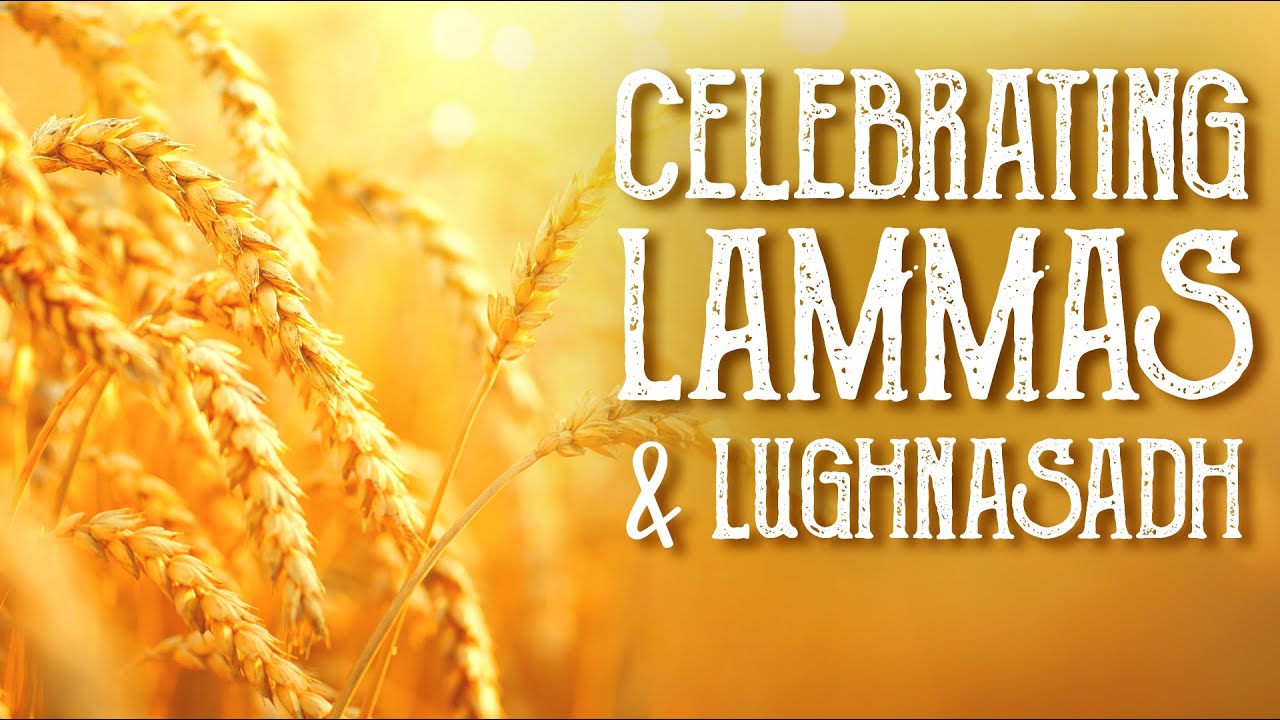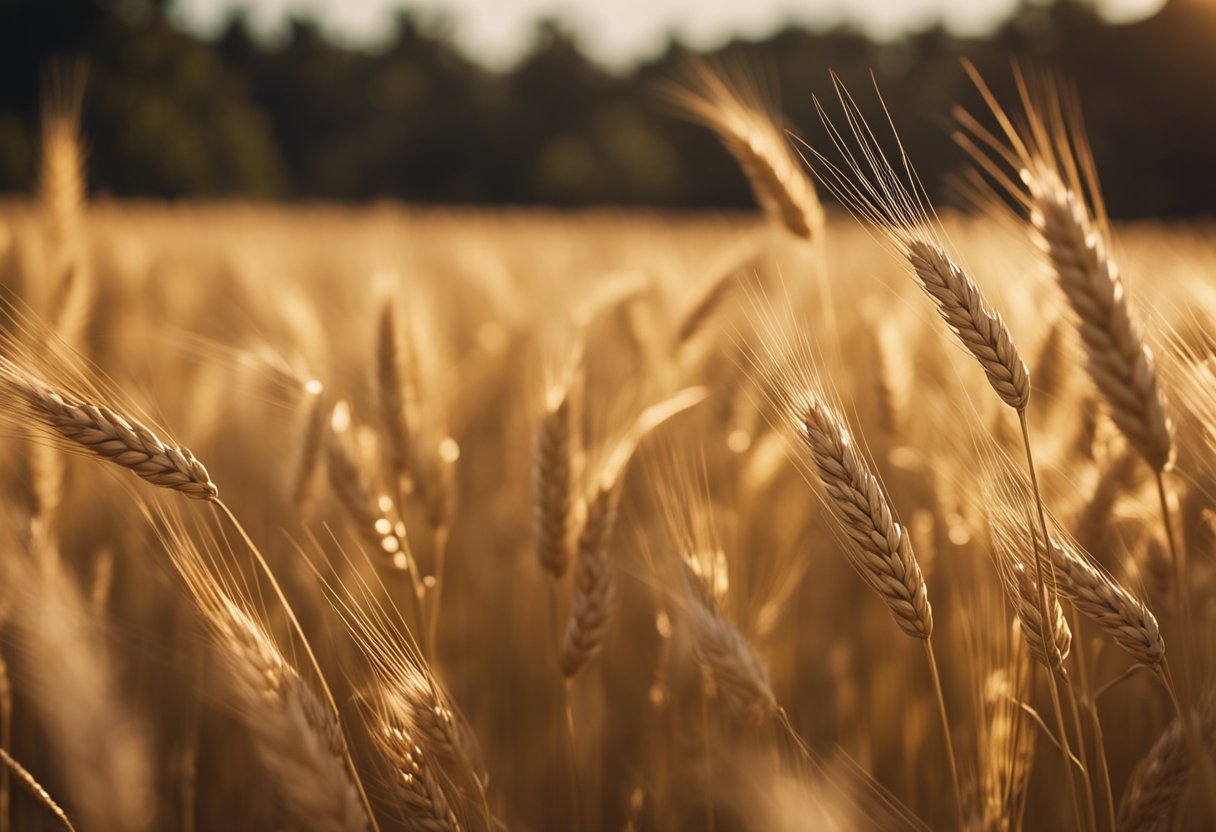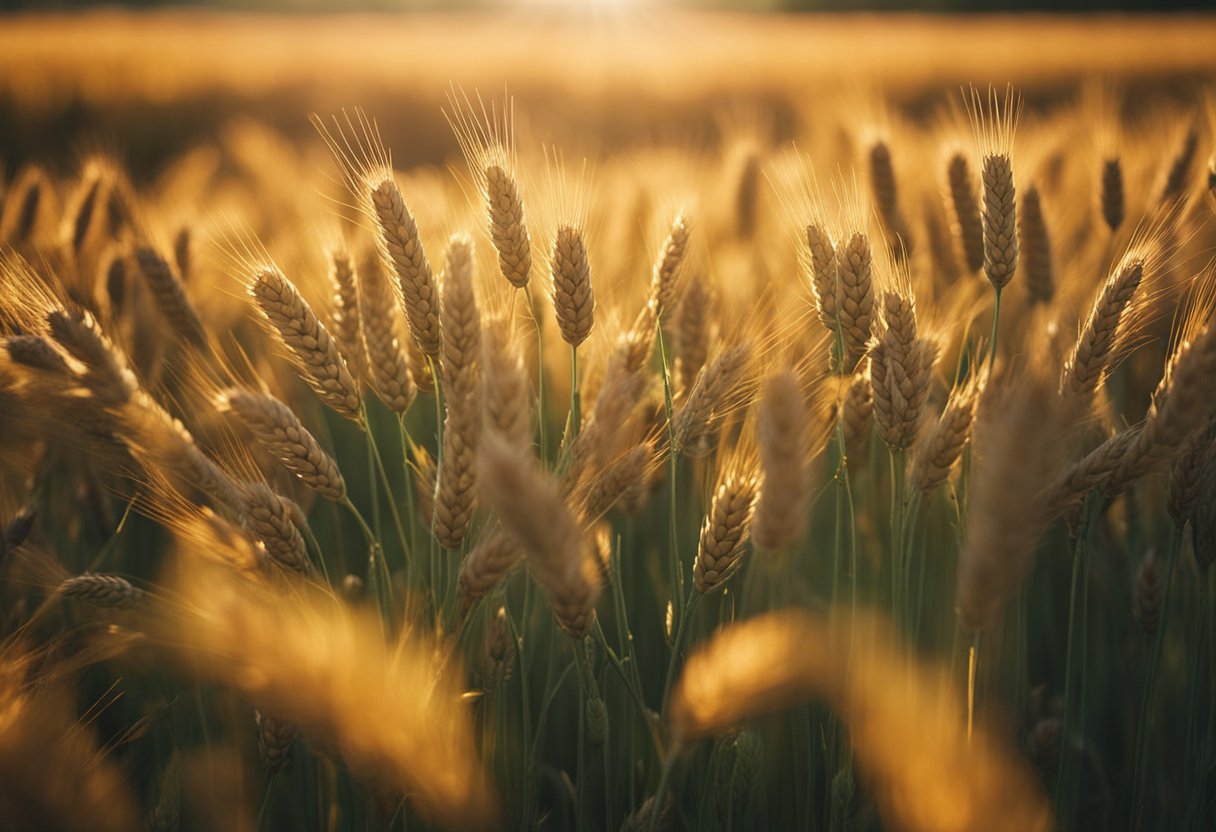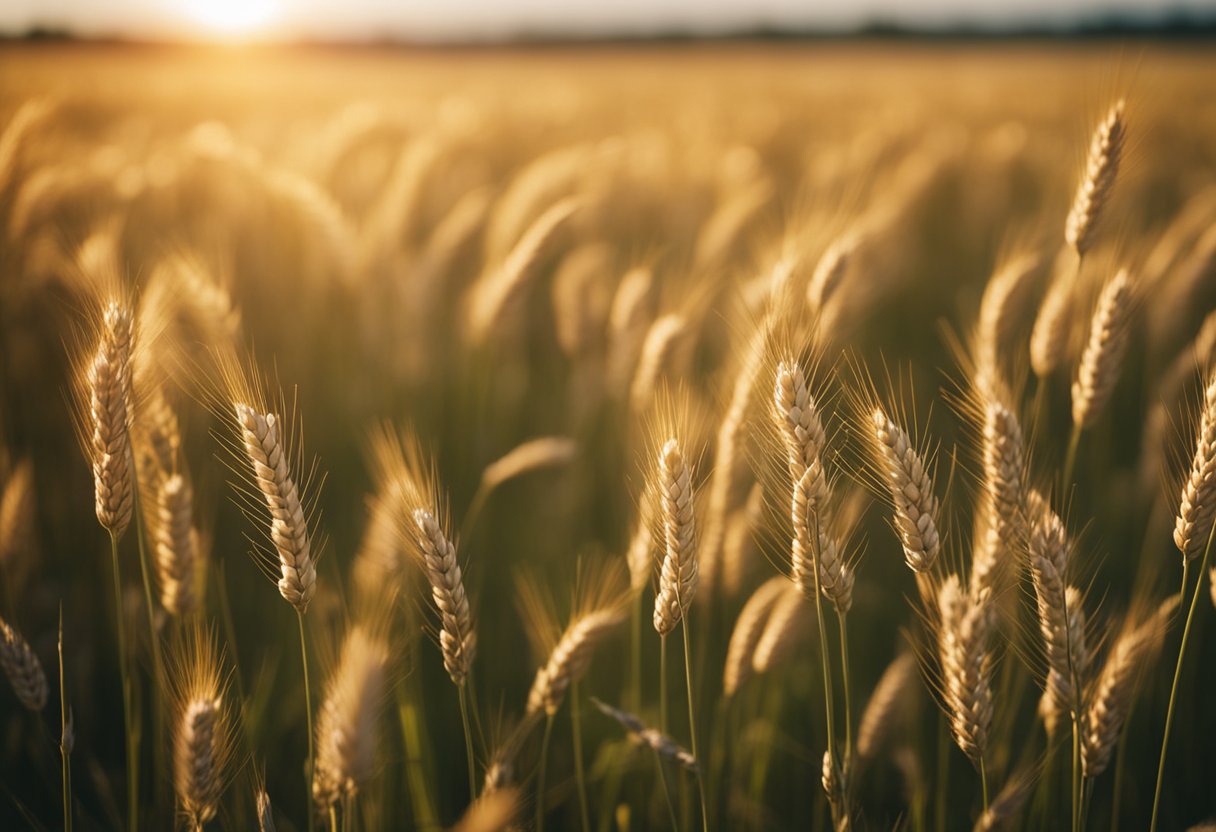Lughnasadh Festival: Celebrating the Start of Harvest and its Cultural Significance

Updated On: April 20, 2024 by Eman Sameh
At the beginning of August, we celebrate the Lughnasadh festival, an ancient Gaelic festival that marks the commencement of the harvest season. Rooted deeply in Celtic tradition, this festival honours the god Lugh and the agricultural bounty that this time of year brings. Lughnasadh, also known as Lammas, has a rich history interwoven with folklore and tradition, embodying gratitude for nature’s abundance.

As summer peaks and begins to give way to grain ripening, Lughnasadh is a time for us to recognise the importance of the harvest in sustaining communities and cultures. While it started as a primarily Celtic festivity, its significance has evolved to be embraced by various cultures and peoples worldwide. Integral to our recognition of the seasons’ cycles, Lughnasadh festivities often include traditional rituals, feasting on seasonal produce, and engaging in crafts that celebrate the Earth’s gifts.
Historical Origins of Lughnasadh Festival
Lughnasadh, a significant festival within the Celtic tradition, originates from age-old myths and marks a vital point in the Wheel of the Year. We shall explore its deep-rooted connections to Celtic deities and seasonal cycles.
Lugh, the Celtic God
Lugh, known for his skills as a craftsman and warrior, is a prominent Celtic god associated with light and the sun. Our festival, Lughnasadh, is named after him to celebrate his mastery and brilliance. It is also a time when we commemorate his role as a patron of the arts and various crafts, reflecting our appreciation for multifaceted talents and the bounties they bring to our lives.
Tailtiu, the Foster Mother of Lugh
Another central figure in the origin of Lughnasadh is Tailtiu, Lugh’s foster mother, who is remembered for her significant sacrifice. She is said to have cleared the lands of Ireland for agriculture before her passing. We recognise her through this festival by reflecting on the importance of nurturing and preparing the earth for the life-sustaining crops that feed us.
Celtic Festivals and the Wheel of the Year
Our Celtic ancestors structured their year by the Wheel of the Year, a calendar encompassing significant seasonal festivals. Lughnasadh is one of these pivotal moments, historically held on the 1st of August, falling midway between the summer solstice and autumn equinox. Today, it signifies the beginning of the harvest season for us, marking the point when the first grains were traditionally reaped and when we start giving thanks for the abundance of the impending harvest.
Significance of Lughnasadh in Modern Times

Lughnasadh, once a Gaelic festival heralding the beginning of the harvest season, still resonates with the modern pagan community and has adapted to the rhythms of both The Northern and Southern Hemispheres.
Lughnasadh in the Pagan Community
Lughnasadh is a pivotal point on the Wheel of the Year, marking a time of gratitude and first harvest. Contemporary pagan practice often involves rituals and festivities that honour the Earth and celebrate the season’s yield. This festival also pays homage to the Goddess and the God Lugh, who embodies the nexus of harvest, craftsmanship, and artistry. Modern rituals include the making of corn dollies, baking bread from the season’s first grain, and engaging in folk games and music. Such traditions provide a tangible link to the past, grounding the community in shared heritage.
Relevance Across Hemispheres
For pagans in the Northern Hemisphere, Lughnasadh aligns with summer’s peak and the onset of harvesting, strengthening their bond with the cycles of Earth. However, for those in the Southern Hemisphere, the festival is often celebrated in a way that makes sense in their seasonal context since Lughnasadh aligns with winter there. The pagans in the southern regions adapt the festival’s themes of thankfulness and abundance to suit their cooler season, ensuring that the spirit of Lughnasadh remains relevant to their experience of nature’s cycles.
Ceremonies and Rituals
In Lughnasadh celebrations, we engage in a series of ceremonies and rituals that honour the onset of the harvest season. These practices are deeply rooted in Celtic tradition and reflect our gratitude for the Earth’s bounty.
Grain Harvesting Rituals
At Lughnasadh, we initiate the harvest with the ritual cutting of the grain. This act is symbolic, representing the gathering of the first crops and the abundance provided by the land. We often tie the freshly harvested grain into sheaves and arrange them in honour of the harvest. These sheaves might be crafted into shapes or figures that are then used in ceremonial processes or as decorations to represent the spirit of the harvest.
Altar Arrangements
For our altars at Lughnasadh, we meticulously arrange items that reflect the essence of the festival. One may find sheaves of grain, basketfuls of the first fruits, and harvest bread as traditional representations. Candles are employed to symbolise the divine light, while seasonal flowers and corn dolls frequently adorn the space. The altar serves as a focal point for giving thanks and celebrating the Goddess’s gifts and the Earth’s fertility.
Sabbat Celebrations
Lughnasadh is one of the key Sabbats in the Wiccan Wheel of the Year and is marked by a variety of jubilant festivities. We may gather for feasting, games, and folk music, often culminating in dancing and singing to celebrate the gifts of Lugh, the Sun God, and his craft. Among Wiccan traditions, we may also engage in spell work, and meditations centred on themes of prosperity, reflection on the year’s progress, and preparation for the turning of the seasons.
Festivities and Cultural Practices
In celebrating Lughnasadh, various festivities and cultural practices come to life, centring on community, tradition, and the joy of the harvest season.
Competitions and Games
We participate in various competitions and games that remind us of our folklore and community spirit. These may include traditional athletic contests known as the “Lughnasadh games,” where participants compete in feats of strength and skill. More lighthearted pastimes, such as sack races and tug-of-war, foster camaraderie among community members of all ages.
Music and Dance
Music and dance are vibrant components of the Lughnasadh festival. We immerse ourselves in the melodies of folk songs played on traditional instruments like the fiddle and tin whistle. Dancing typically accompanies the music, featuring reels, jigs, and set dances, which are a testament to our rich cultural heritage. These lively performances offer both entertainment and a sense of connection to our ancestral roots.
Handfasting and Trial Marriages
Handfasting ceremonies and trial marriages are unique practices held at Lughnasadh. Couples participate in handfasting, binding their hands as a symbol of their commitment. Additionally, trial marriages, which last a year and a day, are undertaken. This period serves as a way for the couple to decide if they wish to enter into a permanent union, a tradition deeply rooted in our cultural history.
Lughnasadh Foods and Feasting
As we celebrate Lughnasadh, the focus on freshly harvested ingredients and traditional recipes becomes a cornerstone of the feast. Through our choices of food, we enjoy the season’s flavours and partake in a time-honoured tradition that hails from Celtic harvest celebrations.
Breads and Grains
Lughnasadh is particularly significant for its celebration of grains. Our tables often feature hand-baked bread as a homage to the first harvest of wheat. The bread, infused with grains like corn and oats, symbolises the embodiment of the harvest spirit. One can enjoy a variety of breads during Lughnasadh, including freshly baked loaves and bannocks, often made with local flours to reflect the regional character of the harvest.
- Barley Bread: A staple grain, barley, is used in hearty loaves.
- Oatcakes: Simple yet nourishing, these are a tribute to the importance of oats in our harvest.
Seasonal Foods and Preserves
Embracing the abundance of fruits that Lughnasadh brings, we indulge in a plethora of seasonal delights such as blackberries, bilberries, and blueberries. These fruits are not only consumed fresh but also preserved to extend the bounty of summer into the colder months. We capture the essence of summer’s sweetness through jams, jellies, and bottled preserves.
- Fruit Jams: Bursting with the flavours of the season, these are a way to savour the taste of Lughnasadh year-round.
- Pickled Vegetables: Preserved in brine or vinegar, these provide a tangy contrast to the meal’s richness.
On Lughnasadh, our feasting is a testament to the wealth of the earth and is an occasion to give thanks for nature’s offerings. By incorporating these foods into our feast, we maintain a close connection to our cultural roots and the cycles of nature.
Nature’s Abundance and Harvest Themes

As we observe Lughnasadh, we witness the embodiment of abundance and the very essence of the harvest’s bounty. This celebration is deeply rooted in the rhythms of nature as we transition from the warmth of summer towards the balance of the Autumn Equinox. The themes during this time are reflected in the symbols of prosperity and the significant seasonal changes that occur in nature.
Symbols of Prosperity
Throughout history, various symbols have become synonymous with prosperity and the success of the harvest. Among them is grain, which is significant in Lughnasadh celebrations. Grain is the very heart of the harvest, often used in rituals to symbolise the first fruits of our labour. Another powerful symbol is corn, representing the staple crop and the sustenance it provides. Furthermore, flowers and fruits, bountiful during this period, are physical manifestations of nature’s generosity, each bloom and harvest sharing the story of the land’s fertility. They’re integrated into seasonal décor and hold ceremonial value during Lughnasadh festivities.
- Grain: A symbol of sustenance and rebirth.
- Corn: Emblematic of nourishment and the core of the harvest.
- Flowers: Signify the beauty and variety of nature’s offerings.
- Fruits: Represent the results of hard work and nature’s munificence.
Seasonal Changes in Nature
As summer progresses, the subtle shift in the landscape heralds the approach of autumn. We begin noticing a gradual change—the air carries a different scent, leaves faintly hint at their forthcoming hues, and the sunsets possess a certain richness unique to this time of year. This transition is a palpable reminder of our planet’s continuous growth and dormancy, resplendence and decay cycles. With the coming of the Autumn Equinox, we find a perfect equilibrium; daylight and darkness hold equal sway before the descent into shorter days. During Lughnasadh, these changes remind us to be grateful for nature’s abundance and to prepare for the times when the land will rest.
- Summer’s End: Warmth still lingers, but the season’s peak has passed.
- Approaching Equinox: A time of balance and reflection as day equals night.
- Harvest Time: A busy period of reaping what has been sown and nurtured.
In essence, Lughnasadh brings themes of gratitude and provision to the forefront. It is an opportunity for us to take stock of nature’s richness and celebrate the enduring cycle of growth and renewal. We join together to honour these themes through time-honoured rituals, ensuring that the traditions and stories of our ancestors continue to thrive in our modern observances.
Crafting and Artistry at Lughnasadh
We delve into the rich traditions of Lughnasadh, where crafts and skills are central to celebrating the first harvest. This is a time when the natural world offers abundant materials for creating, and the community comes together to honour these gifts through artistry and craftsmanship.
Corn Dollies and Woven Goods
At Lughnasadh, we find the tradition of making corn dollies alive and well. These intricately woven figures are crafted from the first sheaves of grains harvested. The art involves twisting and tying the stalks to form representations of the harvest spirit. It’s a practice steeped in heritage, symbolising a home for the spirit during winter.
In addition to corn dollies, other woven goods become prominent now. Artisans use materials like straw and rushes to create items, including baskets and mats. The techniques reflect a deep understanding of the materials and a respect for the utility and beauty inherent in these natural resources.
Home Decor and Natural Art
Lughnasadh is also a time for adorning our homes with natural art embodying the season’s essence. We gather flowers, leaves, and other gifts from nature, arranging them creatively in our spaces to reflect the vibrancy of the harvest.
Using skills passed down through generations, we craft wreaths and garlands, often incorporating cereals and ears of corn. These decors not only brighten our homes but also remind us of the earth’s cyclical and bountiful nature. Crafting at Lughnasadh is more than an activity; it represents a tangible connection to the earth’s cycles, a way to express gratitude through creation, and a means to preserve the beauty of the season through arts and traditions.
Spirituality and Religious Observances
Spirituality intertwines with tradition in the observance of Lughnasadh as both Pagan and Wiccan communities participate in meaningful rituals and offerings. This is a time for expressing gratitude and honouring the Earth’s bounty.
Pagan and Wiccan Rituals
Pagan and Wiccan communities mark Lughnasadh as one of the eight major Sabbats in the Wheel of the Year. It’s a time to acknowledge the first fruits of the harvest season with a bevvy of customs that stem from Celtic traditions. Specifically, rituals during Lughnasadh focus on the aspects of the Deity Lugh, the god of craftsmanship, and his foster mother Tailtiu, who is said to have died of exhaustion after clearing the plains of Ireland for agriculture. Participants often engage in traditional activities such as crafting corn dollies, symbolising the Goddess, and baking bread as part of their ceremonial practices.
Blessings and Offerings
Our blessings and offerings are a core component of Lughnasadh celebrations. We may lay out a feast that includes the season’s first grain, bread, or berries as an offering to the Deity. Furthermore, we express our gratitude for the abundance provided by the Earth, and it’s not uncommon for us to hold ceremonies where blessings are given in the presence of a communally crafted altar. Often adorned with harvest symbols, such as sheaves of wheat, the altar is a focal point for our solidarity and spirituality during the Sabbat.
Lughnasadh’s Impact on Agriculture

As we explore Lughnasadh’s significance, it’s clear that its influence on agriculture has been profound, bridging ancient rituals with modern farming practices.
From First Harvest to Present Farms
The festival of Lughnasadh marks a pivotal point in the agricultural calendar: the First Harvest. It’s a time when the earliest grains were traditionally gathered, signalling a period of both hard work and celebration for the communities dependent on the land’s yield. During Lughnasadh, the importance of agriculture takes centre stage, reflecting a deep-rooted connection with the earth and its cycles.
Historically, this festival intertwined religious rituals and traditions, focusing on giving thanks for the harvest. It was not merely a time to reap the first fruits of labour but also an occasion to express gratitude for the bounty and pray for continued prosperity.
When we consider Lughnasadh’s impact on current farming practices, remnants of these ancient customs can be found. While contemporary farms are far more mechanised and less governed by seasonality, the core values of hard work, gratitude, and hope for prosperity continue to echo through agricultural communities. Lughnasadh reminds us of our ongoing relationship with nature, our dependence on it for sustenance, and the cyclical nature of growth and renewal.
The transition from manual labour to mechanical means in agriculture has shaped our approach to the harvest season. Even now, as we acknowledge the mechanisation of farms, Lughnasadh brings us back to the importance of agricultural festivities, promoting a sense of community and shared labour.
The continued observance of Lughnasadh in some form—even as a cultural or historical festival—highlights the eternal link between agriculture and the people it supports. It serves as a reminder of our ancestors’ reliance on nature and our enduring gratitude for the earth’s gifts.
Lughnasadh Worldwide
As we observe Lughnasadh, it’s fascinating to consider its transition from a Gaelic festival to a celebration with worldwide reach, reflecting the spread of Celtic traditions and the melding of cultures globally.
Global Celebrations
Lughnasadh, originally a Gaelic festival marking the commencement of the harvest season, is now acknowledged around the globe. Its celebration has traversed borders, resonating with people who honour the earth’s bounty. Traditions vary from region to region, but the core spirit of Lughnasadh as a festival of gratitude is a common thread. For instance, in the Isle of Man and other parts of Scotland and Ireland, Lughnasadh festivities remember the god Lugh and his foster mother Tailtiu with time-honoured activities such as feasts and games.
Elsewhere, communities have integrated aspects of Lughnasadh into their own seasonal celebrations. This aligns with the universal human tradition of honouring the cycles of nature, which finds its place in many cultures worldwide.
Interfaith and Cultural Exchange
Lughnasadh has also fostered interfaith understanding and cultural exchange. As communities worldwide have come to share their harvest festivities, they’ve built bridges of mutual respect and celebration. For instance, in some interfaith communities, Lughnasadh is a time to learn from various harvest-related observances, such as the Jewish Sukkot or the North American Thanksgiving, exploring how these traditions reflect similar values and themes.
This sharing of cultural wealth enriches all involved, offering a chance to understand and integrate diverse perspectives and customs into the fabric of our global community. Through these celebrations, we embrace both our unique cultural heritages and our shared human experiences, strengthening bonds and fostering a more inclusive world.
Frequently Asked Questions
In this section, we address common queries related to the ancient Celtic festival of Lughnasadh, providing insight into its traditions, modern practices, typical fare, and symbolic meanings.
What traditions are associated with the celebration of Lughnasadh?
Traditionally, Lughnasadh is a time for communities to unite to mark the harvest season’s start with games, fairs, market trades, and match-making. It honours Lugh, the Celtic sun god, and his foster mother, Tailtiu, who is said to have cleared the plains of Ireland for agriculture.
How do modern practitioners observe Lughnasadh?
Today, practitioners often celebrate by baking bread, holding feasts, and participating in rituals to give thanks for the abundance of the harvest. Many modern Pagans gather for festivities that may include symbolic rituals, crafting, and folk music to honour the festival’s spirit.
Could you provide details on the typical foods consumed during Lughnasadh festivities?
During Lughnasadh, foods made from grains, such as bread and cakes, are commonly enjoyed to honour the harvest. Seasonal fruits and vegetables and dishes made from freshly harvested crops are featured prominently, reflecting the festival’s agricultural roots.
What symbols are commonly associated with Lughnasadh, and what do they represent?
Common symbols of Lughnasadh include corn, sickles, and the cornucopia, each representing the harvest and abundance. The corn doll or ‘corn dolly’ is another symbol, often made from the last sheaf of the harvest and believed to house the spirit of the grain.
How is Lughnasadh pronounced, and where does its name originate?
Lughnasadh is pronounced as “Loo-nah-sah.” The name originates from the Old Irish for “commemoration of Lugh,” dedicated to the eponymous god associated with skill and craftsmanship. This reflects the festival’s ties to harvesting and handiwork.
Which crops are typically harvested at Lughnasadh, and how is this reflected in the festival?
Crops such as wheat, barley, and oats are traditionally harvested around Lughnasadh. The festival reflects the agricultural cycle, celebrating the gathering of these grains, which are staples in festive foods and also represented in the festival’s symbols and traditions.






